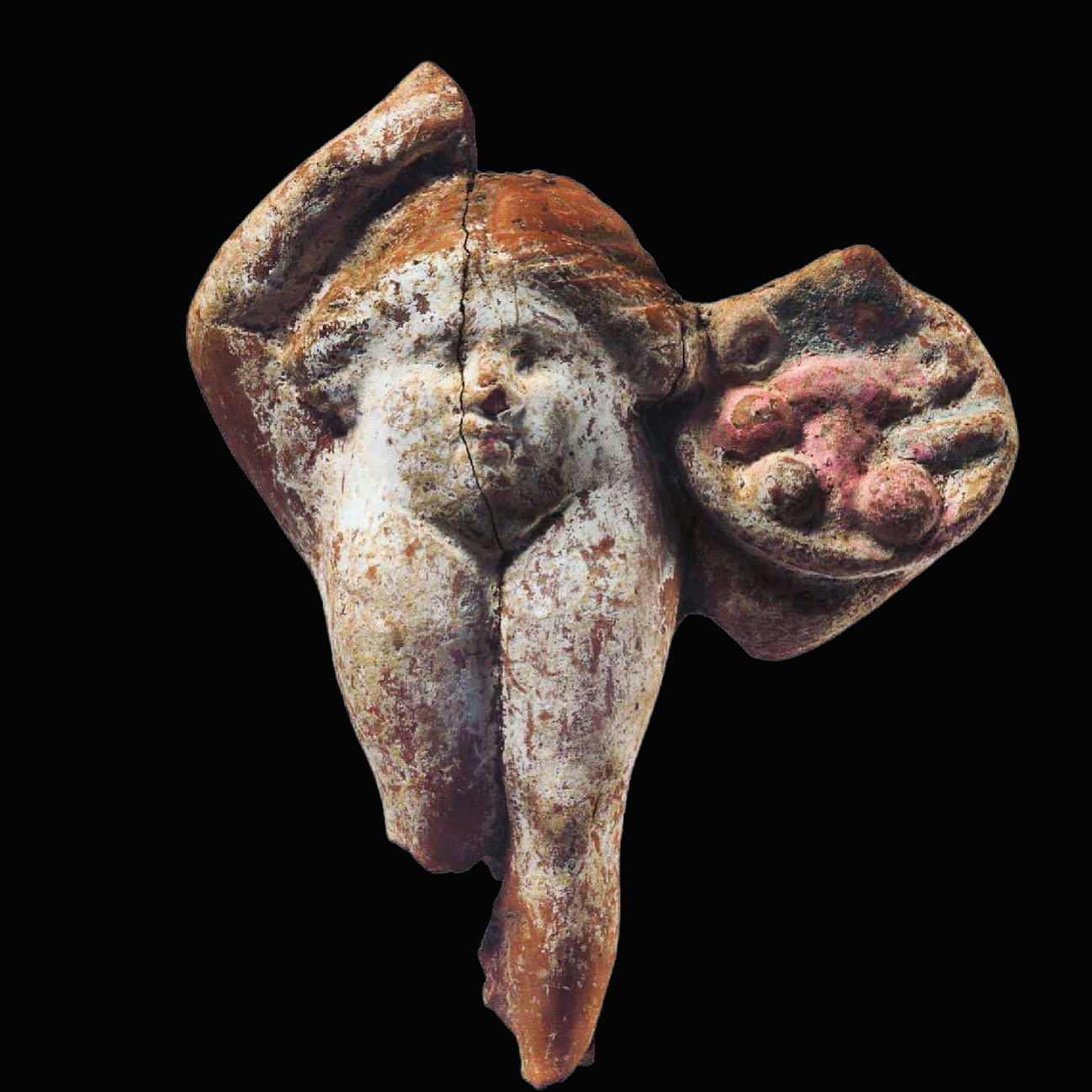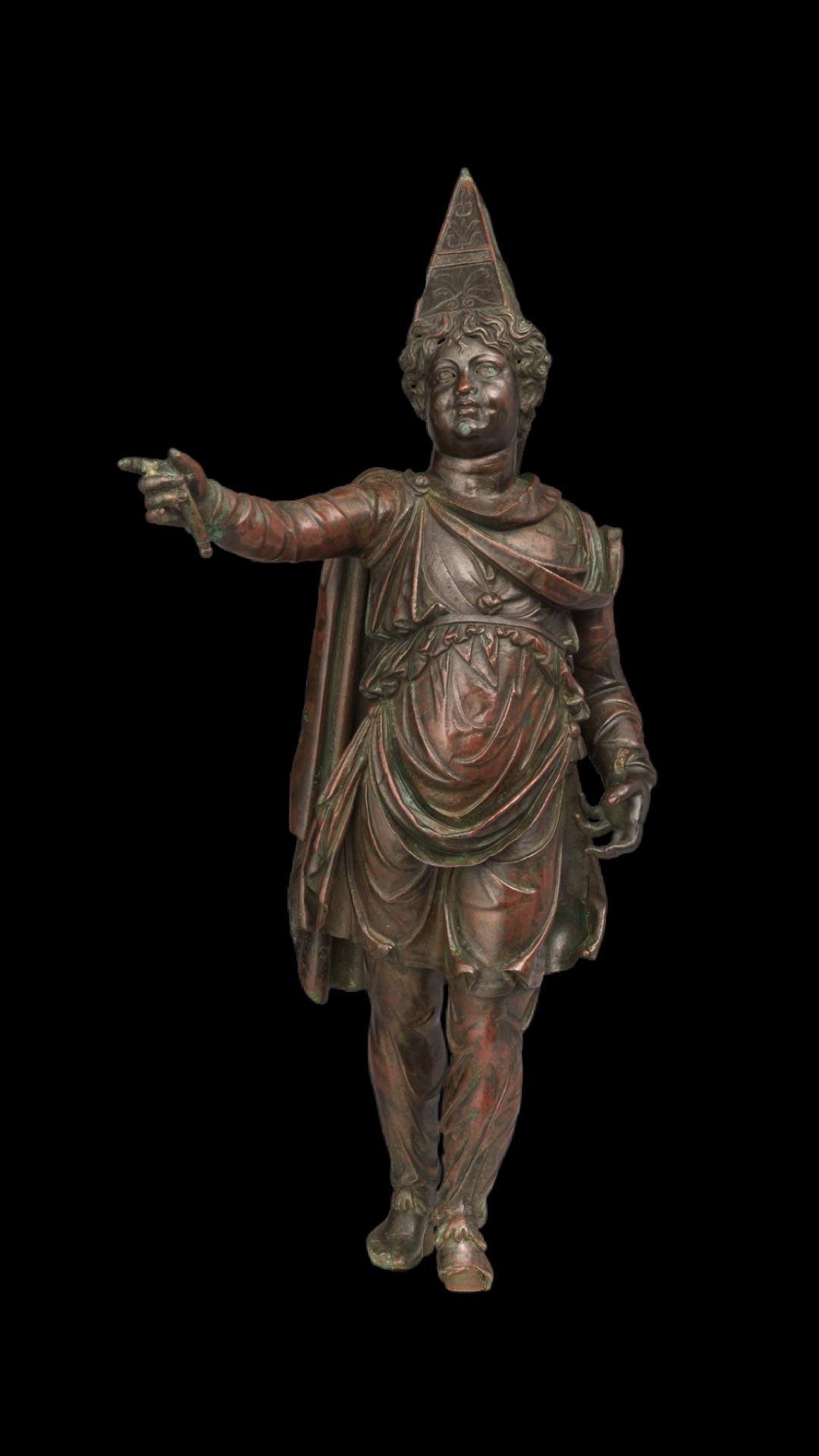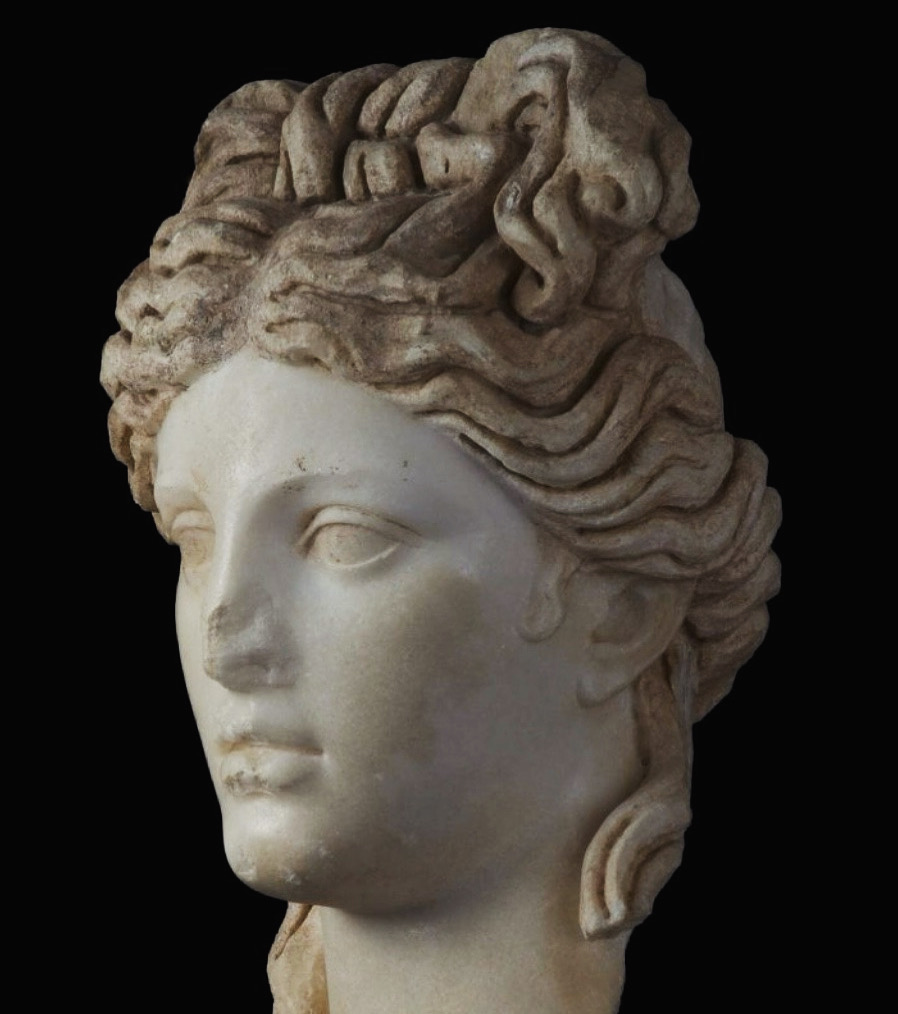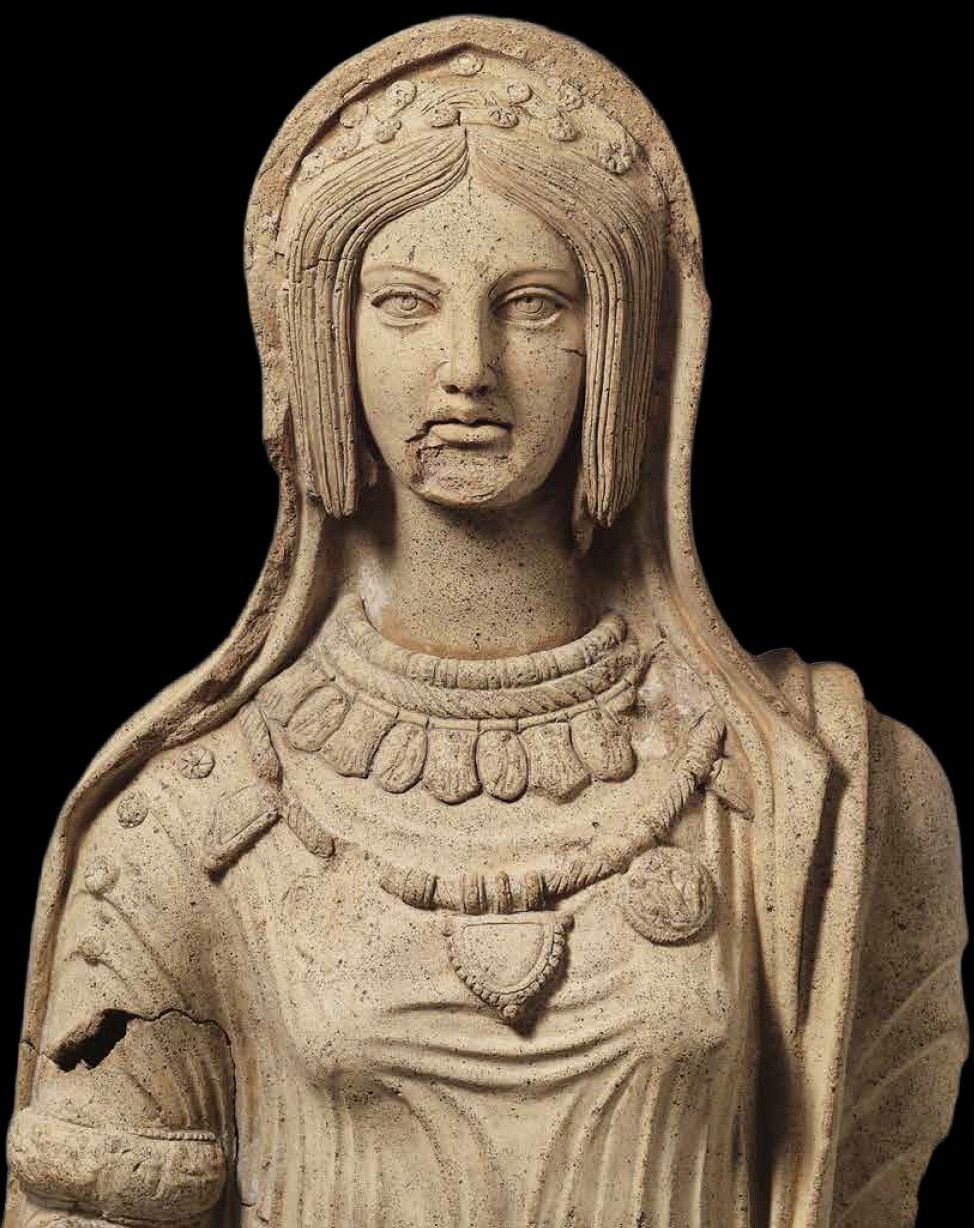Dozens of these terracotta figurines were found in 1898 during excavations of the sanctuary of Demeter in Priene, leading to consternation on the part of German archaeologists there and some fun theories as to their cultic function…. Worshipful belly dancing, anyone?
This one was found in Samos (not so far away) because although fragmentary I quite enjoy the amount of polychromy preserved. Gives a little more flair to those creamy legs, no? In any case, they all have the basic format: a woman (often lifting her skirts as part of the great reveal) with nude lower torso, a female head (complete with elegant coiffure) where the belly should be, and arms clutching accoutrements (baskets usually, sometimes musical instruments) and variously posed.
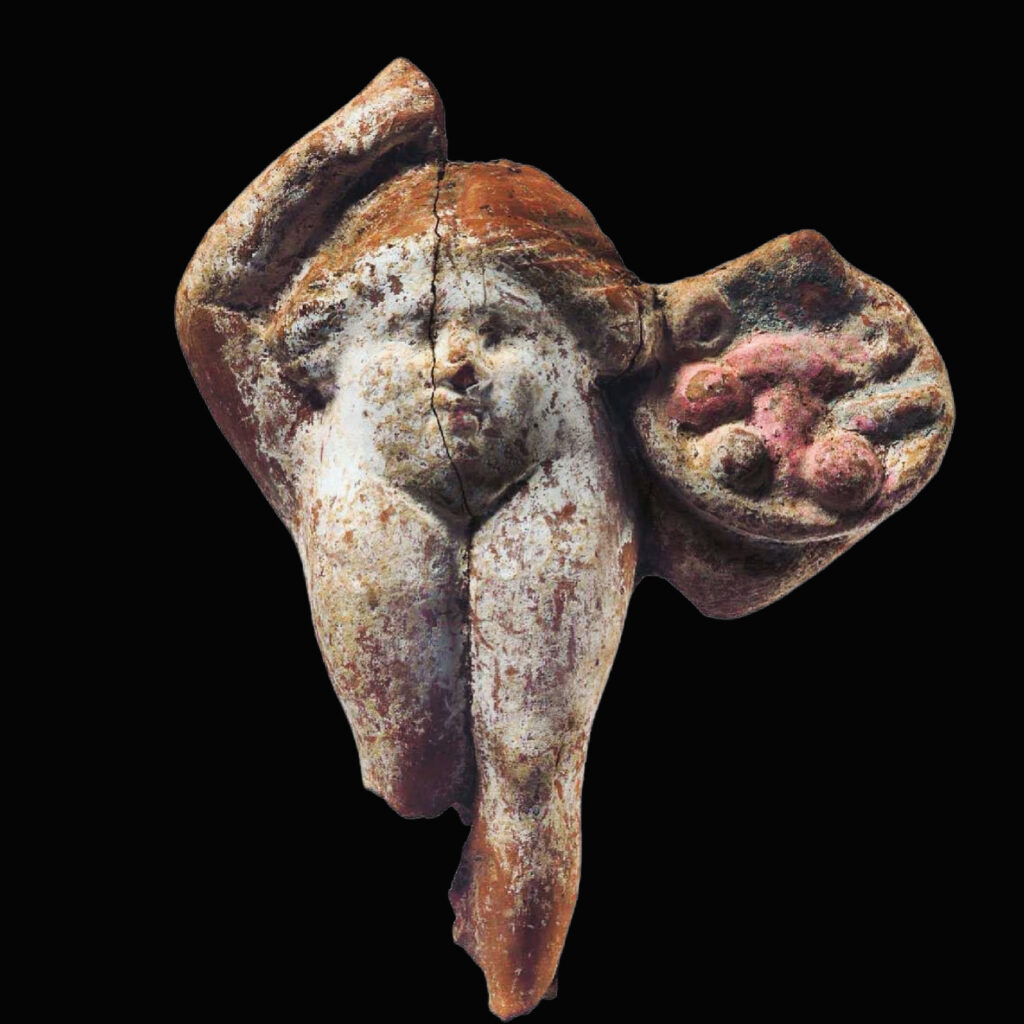
They’re typically identified with ‘Baubo’, but as much as that peculiar anatomy might be on full display, the figurine’s origins and the meaning are rather more shrouded in mystery (as most aspects of ancient cult, particularly related to Demeter are). Fertility in some capacity seems to have a role – Demeter after all being goddess of annual renewal and the harvest.
Baubo (also known as Iambe) was a shadowy figure in Greek literature but an undeniably entertaining one. During Demeter’s all-consuming grief after the abduction of her daughter by Hades (and the problematic deep freeze the earth was plunged into as a result), a servant figure tried to cheer her up by exposing herself in a most unladylike way. And it worked! The goddess laughed, and was coaxed into eating and drinking once again. The power of comic relief!

